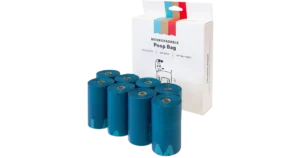As a dog owner, you want the best for your furry friend. This includes a nutritious diet that meets their needs. You might be searching for the best organ meat dog food, top rated, or organic options to keep your pup healthy and happy.
With many choices out there, picking the right one can be tough. But with some guidance, you can find the perfect premium organ meat dog food for your dog.

Organ meat, or offal, is packed with nutrients that dogs need. It should make up about 10-15% of a dog’s raw diet for balanced nutrition. Many pet owners choose nutritious organ meat dog food to give their dogs a great start in life.
By selecting the right organ meat dog food, you can help your dog thrive. They’ll enjoy a long, healthy life.
Understanding Organ Meat in Dog Nutrition
Organ meat is good for dogs, packed with vitamins, minerals, and proteins. It includes liver, kidney, and heart. Adding it to your dog’s diet can be good, but it’s important to do it right.
Organ meat is a superfood for dogs, full of nutrients compared to muscle meat. A balanced diet for dogs includes various nutrient-rich foods, and organ meat is a great choice. But, remember, organ meats should make up no more than 10% of a dog’s diet, as the American College of Veterinary Internal Medicine (ACVIM) suggests.
- Organ meats have more fat than muscle meats, which can cause health problems if eaten too much.
- They are rich in vitamins and minerals but can also have toxins from the liver and kidneys.
- Feeding raw dog food with organ meat comes with risks of harmful bacteria like Salmonella and Listeria.
Knowing how organ meat fits into dog nutrition helps you feed your pet well. Whether you choose raw or cooked organ meat, always think about your dog’s health first. Making smart choices about their diet is key to their well-being.
The Best Organ Meat Dog Food Options Available Today
Choosing the best dog food with organ meat can be a bit tricky. You have two main options: commercial products and homemade diets. Both have their pros and cons. A balanced dog food with organ meat gives your dog important nutrients like iron and vitamins A and E.
For a balanced diet, talking to a vet is key. They can help with a nutritional analysis. You might also want to add dog treats with organ meat, but make sure they’re healthy.
Organ meats like liver, kidney, and heart are great for dogs. They’re full of nutrients that boost energy. But, remember, organ meats should only make up 10% of your dog’s diet. Too much can cause imbalances and even toxicity.
When picking commercial dog food, look for high-quality ingredients and balanced nutrients. Making your own dog food with organ meats is also an option. Just make sure to follow food safety rules to avoid contamination. With the right balance, you can give your dog a great diet with organ meat.
Essential Nutrients Found in Organ Meats for Dogs
Switching to organ meat for your dog was a smart move. It’s because you wanted the best for their diet. Organ meat, or offal, is packed with vital nutrients. Dogs, being carnivores, need a diet rich in organ meats.
Organ meats are full of vitamins and minerals, like vitamin b12. They also offer a lot of protein and fat. These are key for a dog’s health. Some important nutrients in organ meats are:
- Vitamin A: essential for vision, immune function, and skin health
- Vitamin B12: critical for energy, nerve function, and red blood cells
- Iron: vital for healthy red blood cells
- Protein: needed for muscle growth and repair
Adding different organ meats to your dog’s diet is smart. It ensures they get a variety of nutrients. This helps prevent any nutrient deficiencies. By choosing organ meat, you’re giving your dog the best chance to stay healthy.
Raw vs. Cooked Organ Meats: What Science Says
Feeding your dog organ meats can be a bit confusing. Raw offal, like raw beef, is nutritious and healthy. But, it’s important to handle and store it safely. Raw organ meats are full of vitamins, minerals, and coenzyme q10, which are great for your dog’s diet.
Adding raw kidney to your dog’s diet is a good idea. It’s packed with selenium, which is key for immune and thyroid health. Always talk to a vet before changing your dog’s diet. A balanced diet with raw offal can keep your dog healthy.
Raw organ meats offer better protein absorption and digestion. Freeze-dried raw diets help keep nutrients intact. Choosing raw over cooked organ meats means more vitamins and minerals for your dog.
Safe Preparation and Storage of Organ Meat Dog Food
Preparing and storing organ meat dog food safely is key. You want to keep your dog’s food safe from contamination. Organ meats like beef liver are nutritious but need careful handling and storage.
It’s important to consider how much organ meat your dog eats. They should only have 5-10% of their daily food as organ meat. This prevents too much iron and protects their kidneys and liver. Cooking organ meats at 121°C to 180°C is also important for safety.
Here are some tips for storing organ meat dog food safely:
- Use airtight containers to keep it clean
- Keep it in the fridge at below 4°C
- Freeze-dry or freeze to keep nutrients and texture
By following these tips, your dog’s organ meat food will be tasty and healthy. Always talk to a vet before changing your dog’s diet. This includes adding new foods like treats or organ meat dog food.
Transitioning Your Dog to an Organ Meat Diet
Switching your dog to an organ meat diet should be done slowly and with a vet’s help. Organ meats are packed with nutrients that dogs need. Freeze-drying helps keep these nutrients in the meat.
Start by adding a little freeze-dried organ meat to their meals. Then, slowly increase the amount over time.
Making your dog’s food at home is a smart choice. It lets you control what they eat. Organ meats are key for a balanced diet, adding vitamins and minerals missing in regular dog food.

- Start with small amounts and gradually increase the proportion of organ meat in their diet
- Choose high-quality, freeze-dried organ meats to ensure maximum nutritional value
- Consult with a veterinarian to determine the best diet for your dog’s specific needs
- Consider making your dog’s food at home.yy using homemade dog food recipes
By following these tips, you can ensure your dog gets the nutrients they need. With patience and planning, you can make the switch to an organ meat diet a success. This will help your dog live a healthier, happier life.
Common Concerns and Veterinary Perspectives
Thinking about adding organ meat to your dog’s diet? It’s smart to talk to a vet first. They can tell you how much organ meat is good and how to mix it right. Dogs need a variety of foods, including organ meat, to stay healthy.
Organ meat should be a big part of your dog’s diet. But, it’s important to balance it with other foods. A vet can give you advice on how to do this safely. They might talk about the dangers of heavy metals and the need for fresh, quality organ meats.
- Choose fresh, unprocessed organ meats whenever possible.
- Consult with a veterinarian before making any changes to your dog’s diet.
- Balance organ meats with other nutrient-dense ingredients to ensure a well-rounded diet.
| Organ Meat | Nutrient Content |
|---|---|
| Liver | Rich in vitamin A, B vitamins, and iron |
| Kidney | High in protein and folate |
By following these tips and getting advice from a vet, you can make sure your dog gets the right nutrients. This includes organ meat and other foods.
Comparing Commercial Organ Meat Products
Choosing the right organ meats for your adult dogs is key. Commercial products offer a convenient way to add organ meats to their diet. Look for products that are nutrient-rich and made from quality ingredients.
Some products, like Primal-Vitality™ Beef Organ Complex, aim to fill gaps in dog food. It’s a mix of beef organs and bone broth protein. The special hydrolysis process keeps nutrients intact, making it a top choice for your dog.
Here are some important things to think about when comparing products:
- Nutritional content: Find products packed with vitamins and minerals like vitamin A, B, and iron.
- Ingredient quality: Opt for products with high-quality ingredients, such as grass-fed beef organs.
- Price: Compare prices to find the best deal. Online stores like Chewy offer up to 35% off dog food.

By focusing on these points and picking a quality product, you can give your dog the organ meat benefits. Always talk to a vet before changing your dog’s diet. Also, introduce new foods slowly to avoid upset stomachs.
Creating Balanced Raw Meals with Organ Meats
It’s key to add organ meat to your dog’s diet for a balanced meal, as organ meat is packed with essential nutrients. In fact, dogs need a variety of organ meats to ensure a complete and well-rounded diet.
When preparing a balanced raw meal, it should ideally include muscle meat, bone, and organ meat. For instance, the 80-10-10 guideline is a good starting point, as it suggests 80% muscle meat, 10% bone, and 10% organ meat. However, some experts argue that organ meat should make up 25% of the diet. This is because organ meats are incredibly nutrient-dense and provide a wide range of health benefits for dogs. Therefore, incorporating a higher proportion of organ meat can significantly enhance the nutritional value of your dog’s diet.
Here are some essential components to include in your dog’s raw meals:
- Muscle meat (80%)
- Bone (10%)
- Organ meat (10-25%)
- Vegetables and fruits (optional)
When planning your dog’s meals, keep these tips in mind:
- Plan your meals ahead to have all the ingredients.
- Use different organ meats like liver, kidney, and spleen.
- Add a variety of muscle meats, such as chicken, beef, and fish.
- Remember to include bone in their meals, either raw or as bone broth.
By following these tips and adding organ meat, you can make a complete and balanced raw meal. This meal will meet your dog’s nutritional needs.
Conclusion: Making Informed Decisions About Organ Meat Dog Food
Deciding on organ meat for your dog’s diet is undoubtedly key. For instance, organ meats like liver, kidney, and spleen are not only full of vitamins, minerals, and nutrients but also can significantly help your dog stay healthy and happy. However, it’s crucial to always talk to your vet before making any changes to your dog’s nutritional requirements.
When it comes to choosing the right organ meats—whether cooked or raw—for your dog, it’s essential to consider your dog’s age, health, and specific needs. Additionally, take the time to explore different balanced raw meals and organ meat dog food options. Moreover, make sure to follow proper preparation and storage guidelines not only to ensure safety but also to preserve the nutrients in the food.
Furthermore, it’s important to keep learning about raw diets and dog nutrition. By doing so, you’ll be better equipped to make informed decisions. Ultimately, by choosing organ meats wisely, you’re actively contributing to your dog’s long-term health and well-being. In turn, this supports a deeper understanding of your dog’s needs and promotes their overall happiness.





